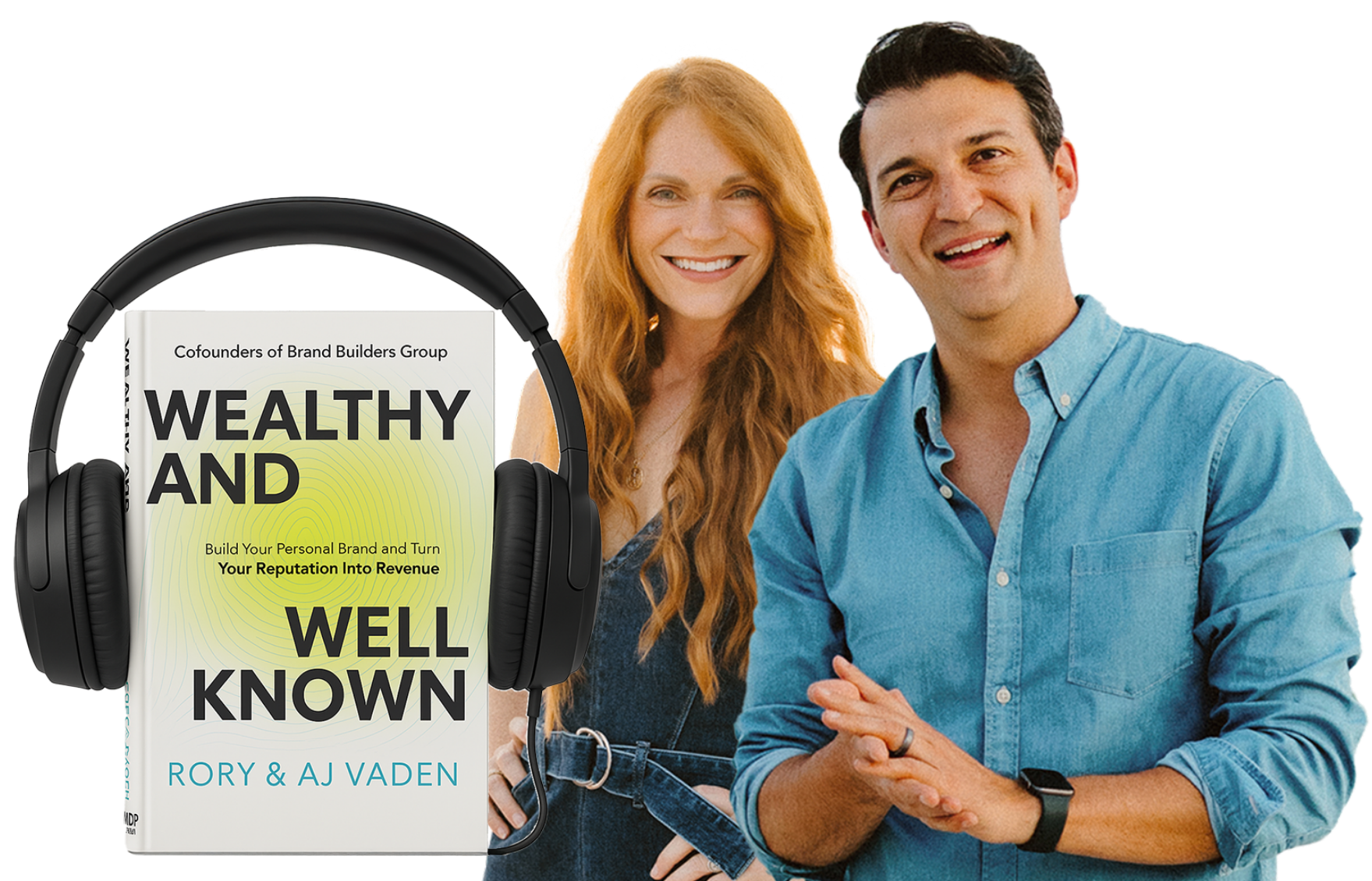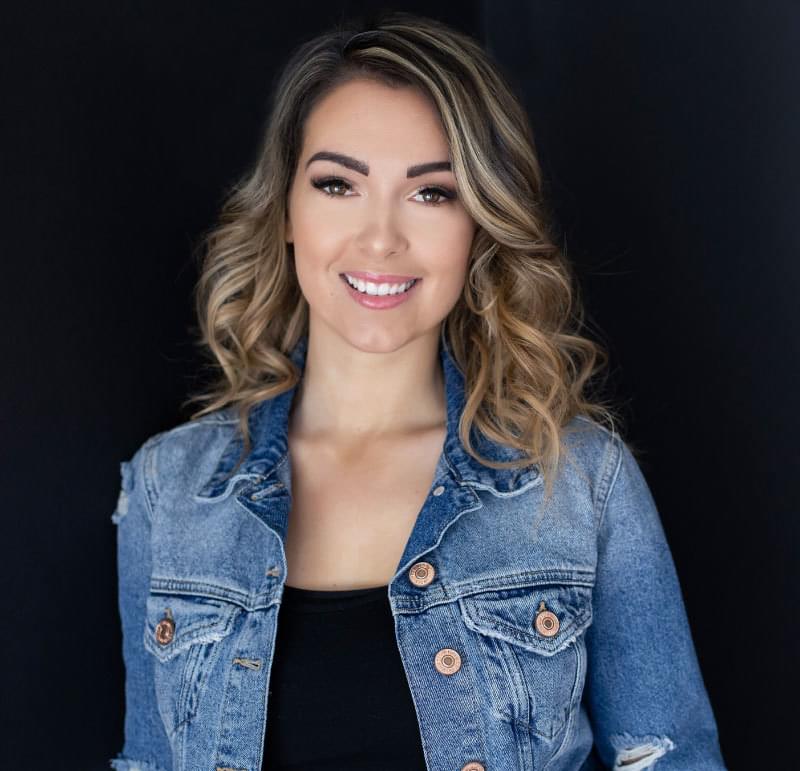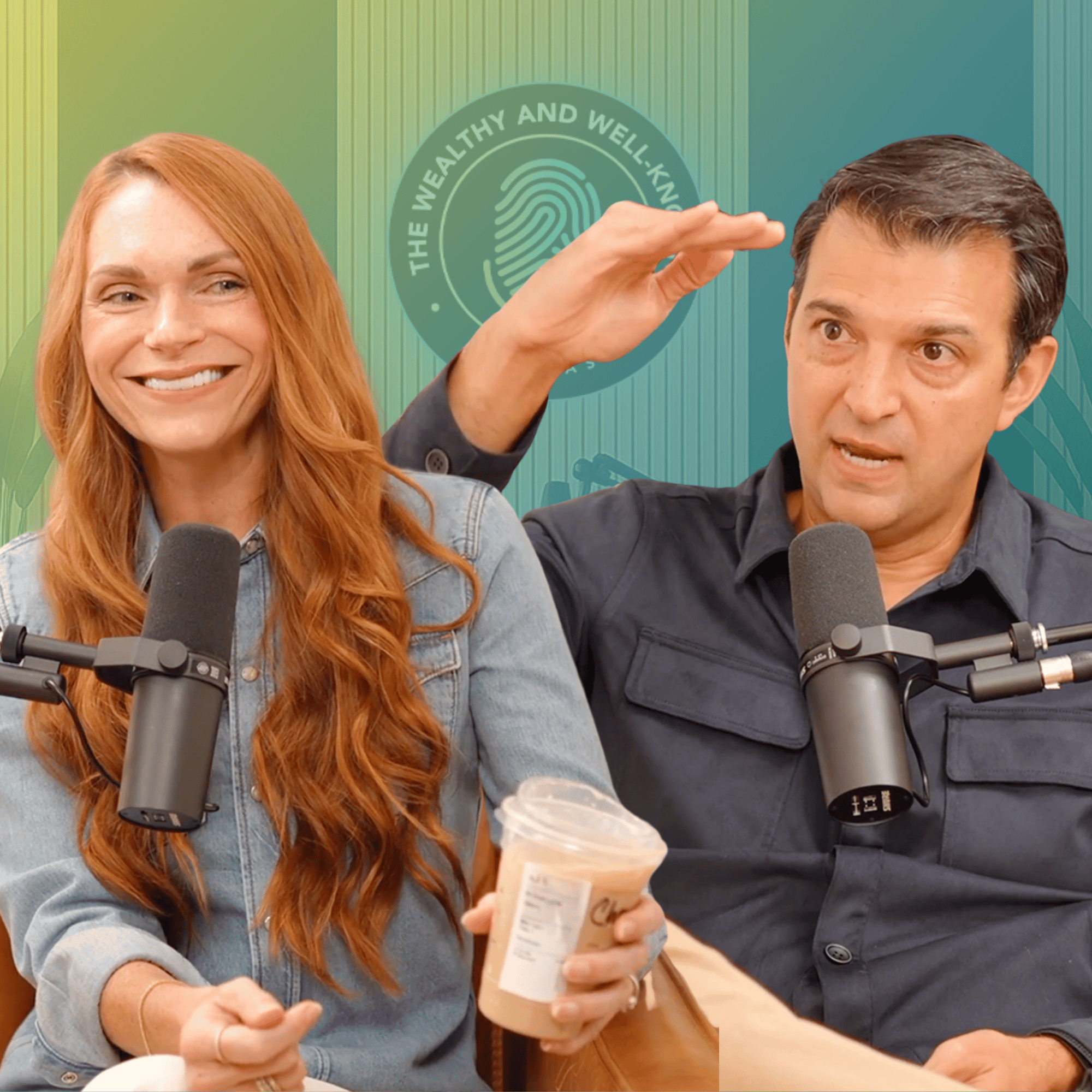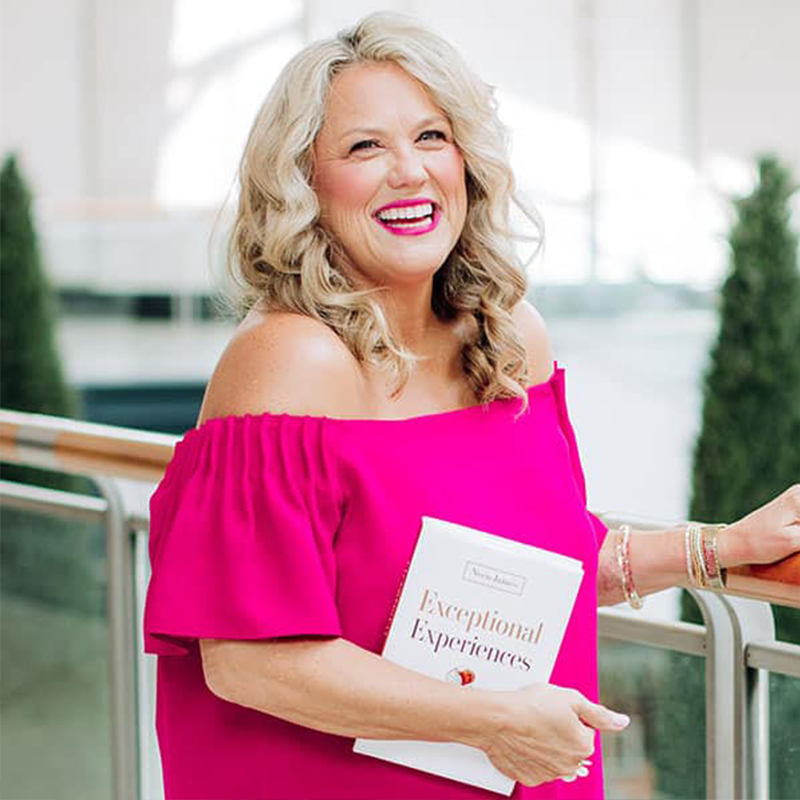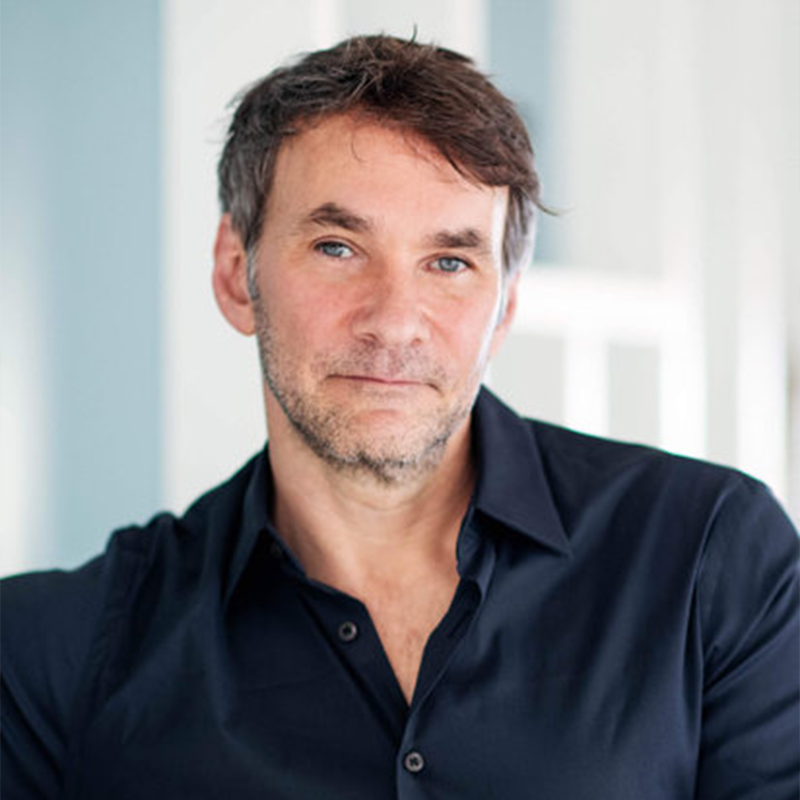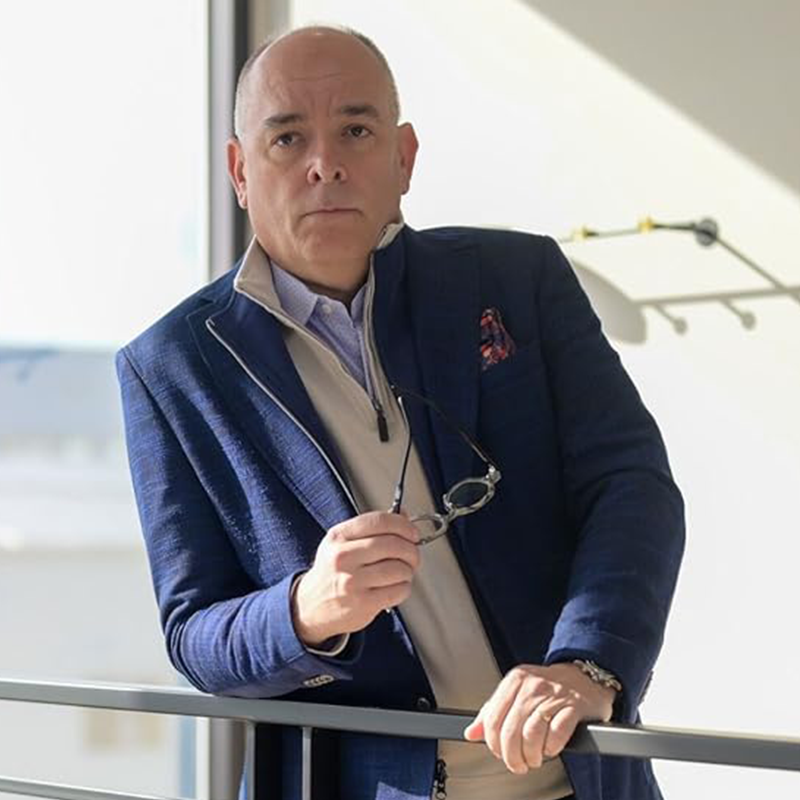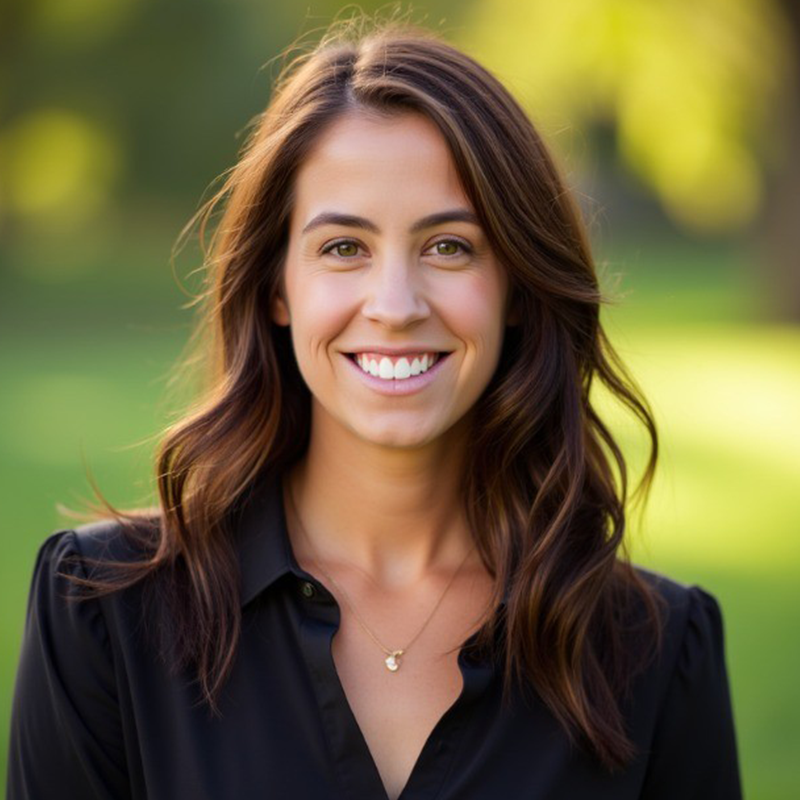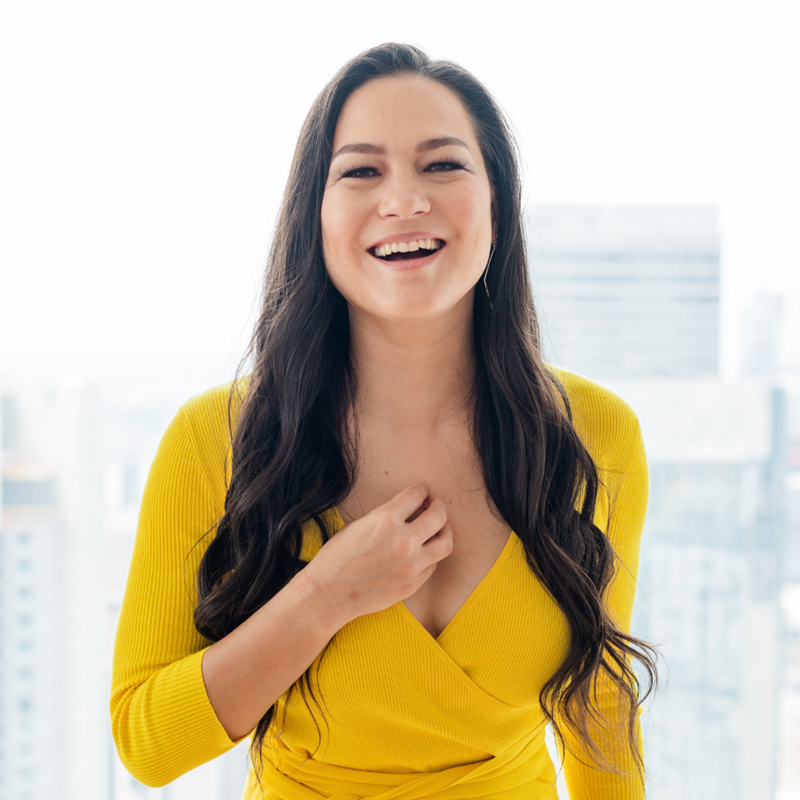RV (00:07):
Hey, brand builder, Rory Vaden here. Thank you so much for taking the time to check out this interview as always, it’s our honor to provide it to you for free and wanted to let you know there’s no big sales pitch or anything coming at the end. However, if you are someone who is looking to build and monetize your personal brand, we would love to talk to you and get to know you a little bit and hear about some of your dreams and visions and share with you a little bit about what we’re up to see if we might be a fit. So if you’re interested in a free strategy call with someone from our team, we would love to hear from you. You can do that at brand builders, group.com/pod call brand builders, group.com/pod call. We hope to talk to you soon.
RV (00:54):
One of the greatest mistakes that I have made in my career as a personal brand is I missed the boat on YouTube. I missed it badly. And then and then we sold all of our social media and I had to start over anyways. And so I started over on YouTube right away, but it’s difficult to build a following from scratch. And that’s one of the reasons why we brought in Marley Jaxx today. I had an opportunity to see her live. She spoke at an event called funnel hacking live with Russell Brunson. She shared the stage with him and Tony, Tony Robins, and Tom bill, you and Frank Kern. And she’s worked with a lot of other, she’s worked with other friends of ours. Alex Charfen has been a long time friend of ours. And we really just enjoyed her content talking about video and her specialty, I think is, is understanding video and YouTube and specifically using that to drive leads for your business. And also I think another specialty of hers is selling high dollar offers and kind of like more complex offerings, not just the, you know, the $200 video course, but you know, converting it into high high-dollar offers and high ticket stuff. So anyways, Marley, welcome to the show.
MJ (02:09):
Hello. Thank you for having me.
RV (02:11):
Yeah. So I wanted to just start with the, like the, the camera in general. I think, you know, a lot of people are still uncomfortable. They’re kind of camera shy. They you know, they, they get a little nervous about YouTube and just kind of video in general. Do you have any, like, what do you think are some of the big mistakes that people make or do you kind of have any advice for somebody who’s kind of sitting in that mode going like, yeah, I kind of want to step out of this, but I’m still nervous and reluctant. Yeah,
MJ (02:44):
Definitely. When people say they’re, they’re afraid of the camera, I usually try to lighten the mood and kind of joke. Like you’re not afraid of a camera, it’s a piece of metal and plastic, what you are afraid of. It’s the fear of stepping out of your comfort zone, but we know that nothing grows there, right. And the fear of what other people will think, but you’re going to be judged no matter what, whether you’re doing something you hate or that you love. So you may as well be judged for doing something that you love that you know, is making an impact and is part of your passion and purpose. So when people say that they’re afraid of the camera, it’s typically or shy, you know, it’s typically something like time tech or talent. It’s what do I say on camera? What kind of equipment do I use?
MJ (03:27):
What, what do people actually want to hear from me? And that’s where that’s kind of the, the personal development, the self discovery and the research of, of your audience around you and what you’re good at that people are asking you for that they want to hear your stories and your message. And, and just starting, you know, sometimes I compare Gary Vaynerchuk, who a lot of us know, he’s, he’s a very popular figure online and he’s got like, whatever, 5 million people following him now. But when he first started his YouTube channel years ago, wine library, TV, he didn’t have many people watching at the beginning, but he kept going. He kept finding his voice. You don’t always get to see the 10,000 hours someone puts in to find their voice. So when you start creating content, you first start creating content for you to find your voice. And that’s, what’s going to build the audience.
RV (04:17):
That’s interesting. Well, and on the tech thing for a second, cause I do think that people get tripped up and you know, at this, at this point, even now, like I have, I have a ring light and and my phone and I shoot all this stuff on the phone, but w w is there like a camera that you recommend or like a, something that’s not super intimidating just to get going, or like, what’s the, what’s the big tech thing that you, you just need to know? Like, if you just want to hit start and you just want to go and you don’t want to spend like six months learning about equipment and all that, but, and you also don’t have a bunch of money to hire a team. Like, what would you recommend for that?
MJ (04:56):
The best camera to use is the one you have. And often in these little smartphones that are attached to our hands or hips at all times, lady Gaga, Selena Gomez, they filmed some of the recent music videos on their iPhone and they’re good quality. And honestly, you can get a little tripod from Amazon. You can get a ring light, or you can even be in front of a window for natural lighting. And those can be really high quality. And the thing is, people want to watch people that are relatable. So sometimes when you think, oh, I got to get all this big fancy equipment and gorgeous luxury is backdrops. That can almost take the personality out of it. So I say, start with your iPhone and what you have.
RV (05:37):
Th th this is one of the things that we learned is you know, every week we kind of do like a little five minute video and we re we have some editors, they run a process, you know, just some, just some basic stock photography they drop in there. And some like royalty free music, those videos perform about a third as well as when I just am in a t-shirt with, with my hair on done. I turn on the camera and I just talk for two minutes and post a to GTV. It will outperform the professionally thing, three, two on every single time.
MJ (06:11):
Yeah. We want to see people that are relatable, that we can see ourselves in them to think they’re just like us.
RV (06:18):
Hmm. Yeah. I love that. I love that the best camera that you use is the one that you have. So, so, all right, so now we get up the courage to record you know, you mentioned time tech or talent when it comes to talent. I think of that as like, what selecting, what do I talk about? What do I say? You know, and everyone that listens to this podcast is, I mean, we have literally billionaire billionaire entrepreneurs who listened to this. We have New York times bestselling authors, and we have, you know, 16 year old kids, like in high school, trying to figure out how to make money on the side. So you’ve got a broad mix of people, but how do you know what to talk about? Or like, you know, what your talent is in terms of what you should put on camera?
MJ (07:07):
There’s a few different places that I recommend looking when you’re trying to come up with, what, what do I talk about? What are the topics to speak to? The first one is the frequently asked questions. You get, what are people asking you all the time? What are the, what’s the experience, the expertise, or the stories that they want to hear from you, that’s going to help them along their journey, or even think about the questions that you were asking that you wish that there was someone like you to answer for, for yourself years ago. And it’s also pretty easy to look right on YouTube or Google and see what are people searching for. Like, you know, when you start to type in the search bar and it autocompletes a tries to finish your sentence, to, to suggest what it thinks you’re typing. Well, that is auto-populated based on what people are searching for.
MJ (07:48):
So if you start to type in how to train your dog underneath that, it’ll be like how to train your dog, to sit, how to train your dog, to stay, how to train your dog to bark. All of those suggestions are video ideas, because that’s what people are searching for that like Google is giving you the data right there. You can also look at other people in your industry or niche and see what kind of content they’re creating. And you could do a similar topic with your own spin, your own story. And, and that’s going to be able to help your audience. And especially when you’re on YouTube, you want to be creating content that, you know, your audience is searching for because YouTube is a search engine, not a social media platform.
RV (08:26):
Yeah. That’s a big distinction to understand. And I, it’s almost like you know, the, the search thing, like you know, there’s all these, these different tools [inaudible] you know, SCM rush and yada yada, that will just, or even just Google, even just a Google like analytics. I forget what the, I think it’s Google keyword research, keyword research tool that will tell you, these are the topics that people are searching. Like these are the, the phrases people are searching for related to your topic. And it just gives you the content calendar. Or the other thing is Quora that website Cora has like a bunch of questions that people are asking. and so you just basically answer one video, answer, one question per video, you’re like off and running
MJ (09:10):
Done. And like, there’s another tool that we like there’s answer the public there’s SCR, where you can just type in a keyword and it’ll populate with tons of suggestions based on exactly how people are typing them into search. And you could make all of those videos, like you, you will never run out of content ideas as long as you just know where to look for them. Yeah.
RV (09:29):
I love that. So, all right. Now when it comes to optimizing and I will, I will openly admit here, this is where we are lazy. Like we is even saying it out loud. It’s so stupid. Cause it’s like, why bother doing all this work? And then not then not optimize the video, but we, we haven’t, we, I think the reason why we haven’t is because we’ve been like, just start just, you know, we have to start over our channel rebuild from scratch. It’s already discouraging. And it’s just like, let’s just get con like, just get going, but now I know we need to optimize and why do we need to do right. So, like after the video is up there, is there anything, or as you’re putting the video up there, like, are there a couple kind of key things that we should be paying attention to and spending the extra few minutes, like they’re worth the time to do? Yeah,
MJ (10:21):
Definitely. Well, the first thing is the title of the video. And you should, you should know what the title of the video is before you even start filming it so that you’re framing the message the right way that you’re answering what people are coming to. You don’t want to bait and switch them and you know, make them click off because they’re like this, isn’t what I clicked here for. So the title of the video based on how people are searching for it, and you’re just going to put that title of person, the headline of the video, and then in the description of the video, you want to be reiterating that title and other keywords similar to it. So that when YouTube and Google takes like just a snapshot of this video, they know this is the topic. And typically in my intro of the video, like when I’m physically, when I’m speaking on camera, I will say the title of the video in the beginning, in my first few sentences, because YouTube also they’ll transcribe your video. So then that also gives more keywords and input to what the video is about. And your thumbnail is also one of the most important things, because when you’re searching for a video topic and all these all these options come up underneath, you’re typically going to choose the video based on the thumbnail that stands out the image that’s more cooking or engaging or someone that you might think might look familiar if you know them already, someone that you already follow, or just that it captures your attention.
RV (11:39):
Yeah. That, you know, it’s interesting. So like one of our close friends is Lewis house. And, you know, I noticed that the titles of his videos and the thumbnails don’t match and his, his YouTube channel has really been a big, it’s really been a big focus this, this last couple of years, and they’ve, they’ve really done a great job of adding the optimization and you know, so like that thumbnail is interesting. It’s almost like it’s a whole separate strategy in and of itself to just go, like, what I mean, other, do you just basically go, what would someone need to see in order to click on this? Or like, is there any other kind of thought process that you use or for what makes a great time nail?
MJ (12:24):
The, the thumbnail is a whole other opportunity to hook people in. Like, it, it’s something that is, you know, is thumb stopping worthy. Like it’s going to stop their scroll because it, it, it stands out among the rest. So it’s not just like you smiling and the title written on, on the thumbnail. Again, it can be another like curiosity hook. Like you’ll never believe what this person said to me, or how did I make a million dollars in 12 months or whatever, like something that’s different than the title of the video. And then the picture next to it that really demonstrates that, like I saw one the other day from Alex, her mosey, he’s a channel that he’s just blowing up so fast he’s. So well-spoken he and his wife, Layla they’re both, their channels are incredible. And Alex had I think the title was something about like spending a hundred thousand dollars and the image was like influencer, like other influencers that we recognize, like grant Cardone and things like that. But then there was also like a supermodel in the background. So it makes you think like, what did he spend a hundred thousand dollars on? So it’s something that leaves that curiosity hook, or that question in your mind that you’re like, well, now I got to click this video to find out what exactly he’s talking about.
RV (13:35):
Yeah. I mean, the neuroscience, there is super powerful as the brain hates incomplete things and the brain hates unanswered questions. So it’s like, if you can create a question of some type with the thumbnail, it’s almost like we’re addicted to watch it to just to answer whatever that question is. Some people call them opening, like opening a loop or opening a question. So I love that. So then, all right, so now we got this put together, we’ve done some keyword research. We know people are searching for we’re answering this question. You mentioned early on you say in the first few minutes, what the video is about. Is there anything in terms of like, when you put together a video and you think about how to structure, like the outline of it in terms I’ve also heard competing answers on how long a video should be.
RV (14:33):
Some people are like, oh, they should be short. People’s attention spans are short, but then it’s like, well, no AVD average viewer duration is the primary metric on YouTube. And so they want it to be long, but they also pay attention to how many people watch the whole video. And if it’s too long, then people don’t watch the whole video. And I’m just like, oh my gosh, like what’s, can somebody just tell me what the answer is? Do you have a philosophy on the right kind of length of time and then like a general kind of outline for structuring one of these videos?
MJ (15:01):
Yeah. Typically, like we aim for an average of 10 minutes. And in that 10 minutes, we can insert about three content hooks, three different stories or frameworks, or three steps of one general framework inside that video. So that also makes it fairly easy to reach 10 minutes. When you’re thinking like, well, how am I gonna, what do I talk about for 10 minutes? So our formula for kind of putting together the script of the video is any intro. Like I mentioned, you want to repeat kind of the title of the video. So I’ll give an example. One of our clients, Cristy code red maybe her video is how let’s say that people are searching for, why am I dieting and exercising and not losing the weight? She’s a weight loss coach. So she could be like, if you’re someone that you are stalled, you’re at that plateau and just tank it that last few pounds off you’re in the right place you ever asked yourself, why am I dieting and exercising and not losing the weight?
MJ (15:54):
I’m going to answer that question for you in today’s video. So she reiterates the title in that intro. Then before going right into the topic, she’s going to give three content hooks. So this is teasing what’s coming up so that people hear that and they go, oh, I got to stay for 0.1 0.2 point and three for the things she’s about to talk about. But we want to introduce these again, as curiosity hooks, things are gonna, that are gonna open up that loop or that question. So she might say something like, first of all, I need to share with you the number one biggest lie in weight loss. This is one that we have all been fed to believe. And one that you no longer have to believe. And so that makes you think like, what is the number one biggest lie? Like I’ve been lied to.
MJ (16:33):
I need you to know, then she can go. And after that, I’m going to make sure. And then she could say and you know what? My clients come to me when they are stalled, when they’re plateaued, I changed these two things in their routine and they hit their weight loss goal faster than ever. Ooh, what are those two things? And then she said, and lastly, I’m going to share with you my strategy for how to get 10% of your body weight off every month without diet pills, shakes, or exercise. Oh, that sounds amazing. 10% every month. How do I do that? And so that creates these three bullet points. These three content hooks that are typically going to make people stay to the end because we’ve now opened up three loops and we want to keep people watching as long as possible.
RV (17:12):
And it almost sounds to me kind of like a table of contents to what a table of contents would be for a book, but you’re, you’re titling. And that actually made my mind go. Hmm. We should probably put more focus on the titles of our chapters, in a book for the same reason to help people to just like actually reading it. And that’s sort of what you’re doing, you’re doing here. So you tell them who the videos for, then you kinda like roll the little like bumper and then you just go in and you just do 0.1, 2.3. Yeah. I mean, it’s pretty straightforward. I mean, it’s pretty straightforward. Yeah. So how does it turn into money? So let’s not, let’s talk about that for a second. Right? Cause it’s like, okay, now I’m making videos. I’m, I’m putting them out there. How do we, yeah. How do we make this into, into money?
MJ (18:11):
So the greatest thing is that you’re creating content based on what, like we already said that people are searching for. So we know that by the time people land on our videos, they are already problem aware. They’re coming to solve a problem for themselves, that your video is now answering and sure you’re giving them lots of value. You’re giving them these steps, but then you’re like, Hey, if you want the framework or if you want the next thing you need, or if you want a done for you template or some kind of resource, that’s going to help you to now get results from what you just learned, click the link in the description below. And that is your lead magnet. It’s a freebie. Maybe it’s a low cost, low ticket thing to bring them into your value ladder, but that’s going to be the most important part is that you take them from YouTube into your funnel so that then you can nurture and ascend that relationship.
MJ (18:58):
And you can even bring them right on to maybe like you maybe bring them into a challenge. Maybe you bring them into a webinar, or we have clients that will bring them straight to a webinar or a challenge. And then from that can very quickly sell into high ticket because the clients that come through YouTube, like I said, they’re already problem aware. And often they’ll binge watch a few of your videos and then are just like, look at how much value I’ve gotten for free. Imagine how much I would get if I invested, if I spent some money and actually invested emotionally and financially into getting this result. And we have clients that say, if they get on a sales call with someone that has come through from YouTube, they’re like, they’re as good as sold. Like we have a a very high conversion rate because they’ve been warmed up so much through YouTube.
MJ (19:41):
So YouTube turns into an evergreen lead generation machine because people are finding this content completely organically just by searching for it. So this isn’t like Facebook lives where you can do a Facebook live or an Instagram story or whatever that disappears in the timeline. Like the algorithm pushes it down to put the more recent stuff up at the top. But with YouTube, like you can have content from years ago that is still showing up at the top of search. I have videos from 2016 that I made once never put any ad spend towards it. And it’s still generating leads for my business. Like I don’t even touch it. If I were to stop posting any more videos, these videos would still be building my email list. And because we have the funnel set up on the backend could still be driving sales consistently.
RV (20:24):
Gosh. Yeah, it’s so true. I mean, sometimes it’s like I did one Ted talk and it’s years ago we get more speaking leads from that Ted talk. Then every other thing we have ever done added up all together and multiplied by two, like I’m going, I should not do anything except just do another Ted talk. Like, because it’s, it’s that evergreen, that power of evergreen of YouTube, it’s totally different than the other, the other platforms. And so w you know, generally speaking, like here’s the thing that I always kind of struggle with is you go like one piece of content, one call to action. That’s super simple. Like, what you just said is basically deliver a 10 minute value bomb and then offer them a lead magnet to take the next step. And then that drops them into whatever your funnel sequence is, which is super simple. When, and how do you do the, like, hit the subscribe button? Like, do you w which one, like, which one do you do first, or do you do them both together or is it sometimes one and not the other, like, does it matter?
MJ (21:34):
So I never want, and this is what I recommend for clients is that we don’t wait until the end to ask for that subscribe. We want to be able to just go straight into the call to action. And even when we do the call to action, I don’t, I don’t want to lead my audience into thinking that I’m ramping down the videos. So you’re not like, all right, thanks so much for watching. I hope you liked this video. If you want some more value, click the link below, like we just go straight into it as if it’s another content hook. So like with the example with Christie about weight loss, and she’s talking about like the, how to lose 10% of your body weight every month, like this strategy works, I’ve seen this person, this, you can give some social proof and I want to help you with this next.
MJ (22:10):
So click the link below and join my 10 pound take-down challenge. That’s so she’s not like slowing her role. She’s, she’s going right into the call to action. But the best time to ask for that engagement is between your content hooks. So let’s say between content hook, number one and two. Now, before I tell you the two things that I change in my client’s routines, this is something that I’m talking about every single week. So hit that subscribe button to my YouTube channel. So I can help you with your weight loss goals, or it can be an engagement break asking for for a comment. Now before I go into my next point about the two things, I change in my clients for teens to help them to lose the weight I want to hear from you, what weight loss programs have you tried tell me in the comments below what’s worked, what didn’t work. Let’s all, let’s all collaborate here. So she’s, you’re always asking for the engagement in the middle of the video when people are still engaged and present. If you wait till the end, typically people are, you know, they’re losing their attention span by them. So we ask in the middle.
RV (23:05):
Yeah. So that’s the other one is about the comments. So you really have subscribe, comment, share, and then like opt in. So you just, you just kinda like vary them up and mix them in, but you do. I like, in-between the content, like, like I like that term engagement break. I’ve not actually heard that. Like, you take an engagement break, almost like a little commercial. I mean, it’s like, how, what on TV? It would be like a little commercial break, but it’s an engagement break.
MJ (23:33):
Yeah. It’s just subtle. So like, you don’t have to stop. And like, before I go into my next point, you could do that. That’s just the example I gave, but it could just go straight into the question. And by the way, I want to hear from you, like what, what weight loss programs have you tried comment below? I’d love to hear what’s worked or like, Hey, and by the way, I’m, I put out videos like this every week. So hit the subscribe button if you’re loving this just quick.
RV (23:56):
Yeah. That’s that that’s super quick. And then what about like the editing part? Like you know, multiple camera angles putting B roll footage under it, stock footage, all that kind of stuff. I mean, you know, jump cuts back and forth is all that pretty important. You can live without it. You do it if you can, or it doesn’t really matter. Yeah.
MJ (24:21):
Do whatever you have the capacity for. And honestly, I’m a huge proponent of outsourcing. And especially when you can hire people overseas who have a lower cost of living, that you can bless their lives by paying them more than even, you know, I hired my first video editor for $15 a video. And that was incredible for me, starting out as an entrepreneur. And that was more than what he, they were actually asking for at the time and my time, like how long it would take me longer to fill, to edit that video, then how long I could make $15 back. And then now knowing that that video can be an evergreen lead generation machine, I’m likely going to make more than $15 from that video. So I highly recommend outsourcing that, but when it comes to the editing quality and that can be a personal preference, it can you know, we want to make sure that it’s aligned with your branding, but typically you can totally go simple.
MJ (25:15):
Of course you want to cut out any ums and AHS or sometimes leave those in because it makes you human. But cut out any parts where maybe you tripped over your words and you restarted. One of the things that I really like to do though, is have attention resets. And that’s just very quickly like subtly moving the camera angle from like, you’re zoomed in now, you’re zoomed out. Now you’re a little to the left. Now you’re little to the right. And it’s very subtle that people don’t even really notice that it’s happening, but it just, it changes the view, but you don’t have to have different cameras to do that. It’s just all in the editing. And especially when you’re starting, I don’t film with multiple cameras. I think that that would be complicated. And what I want to focus on is the message that I’m sharing and who I’m speaking to. I don’t want my head to be caught up in the tech.
RV (26:03):
Yeah. I love that. Cause they’re just zooming in, zooming in zooming out to the side, they do all that. They can do all that in post-production. So the video, where do you find these people? So like you’ve mentioned this, this person and, and I, I’m a little bit shocked that there’s not, maybe I’m just looking in the wrong places, but in my mind, I would think that, you know, like there’s gotta be a whole bunch of kids graduating high school or college that are just like been editing YouTube videos since they were 12 years old and they can make good money doing this, but I’ve, I’ve had kind of a hard time finding these video editors. Are you just looking, where do you go to look? I mean, is this are you posting jobs on like job boards? Are you going to like Upwork and Fiverr and just doing that or, or like, where do you find them?
MJ (26:58):
My favorite ones to go to or Upwork online jobs.ph is specifically for people in the Philippines. So that’s another one that you can find people overseas. Fiverr is good fibers. Okay. I’ve just found more success on things like Upwork. And I think a big part of finding the right people is also you setting the right expectations and giving them what they need to be successful. So for us, like we have a very specific job description and examples of the videos that we want ours to look like. We have a branding guide of, of here’s what our colors are. Here’s here’s examples of videos that we’ve made even giving them some of the editing templates, like my lower third, how my name comes up on screen. It’s the exact thing. Every time I don’t have to ask him to, or my editor to recreate the wheel of here is the resource that I already have.
MJ (27:49):
And then from there, like go expecting that there’s going to be back and forth. Like I rarely even editors that I’ve worked with for years, we rarely have a, we call it like a one hit wonder, like it’s, it’s rarely perfect. On the first time there’s typically little things to go back and forth like, oh, the music I’m going to, I want to change this here to match the emotion a little bit better, or that lower third came in a few seconds too early. Let’s change this or oops, little typo here. Or the B roll. Let’s change out to this one. So expect that back and forth. And then the longer that you continue to mentor or nurture that relationship with your, with your new employee or contractor they, they can improve and get to know your branding and your style. So it’s, it’s just to be expected. And I actually have some YouTube videos on my channel where I talk about our hiring process for hiring video editors. So people can go check that out. Cause it’s, it’s quite a, kind of an intensive process because we want to make sure that we are finding the right people and that we’re setting them up for success.
RV (28:53):
Yeah. And the pay for this. I know I’m a very, it’s like you, you, you said you’ve been able to find people in the Philippines that can edit a good video if you give them some instruction and it’s, well, I mean, what’s the pay range that you’re usually seeing to like edit a video? Yeah.
MJ (29:09):
Sometimes people will will ask for like by the hour and they can be like five, seven, $10 an hour. Typically, and this is something that I learned from experience was I like to pay them by the project that we were both incentivized. Like you get paid quicker, if you are quick and efficient with this. And then I get quality of work at a, at a good timeframe. And we’re both incentivized. I had an editor once that would take longer to, to edit things so that they would get paid their hourly rate. So I just think it’s a win-win to be by the project.
RV (29:42):
Interesting. Yeah. I guess I’ve never thought about that. That way. You think of it as like, well, if they do an efficient job, they’ll make more money doing it by the project, but you’re in, you want to do that because if you’re happy, they still, you still have to be happy and sign off. That’s really cool. Well, Marley, this has been super helpful and tactical which is awesome. You mentioned, you know, you’ve got your YouTube channel. Where else do you want people to go? If they want to learn about you, connect more and see, like, see some of your other tips and stuff that you’ve got here on you know, video and you’re, you’re managing your YouTube channel and converting that stuff into revenue. Yeah, that’d be great.
MJ (30:20):
Well, YouTube is great. Instagram, instagram.com/marley jacks. I respond to all the direct messages there. So if anyone has any questions, please reach out. And we also have a free training. If you go to hello to high ticket.com, it’s a system that teaches you how to generate leads the hello through YouTube and the send them all the way to high ticket. So that’s hello to high ticket.com.
RV (30:43):
Well, there you have it friends Marley. This is just empowering. It’s just very clear and direct and straightforward. It makes, makes it feel like it’s doable. And that we could, we can pull this off. So thank you so much for sharing your expertise and your insight and your time. And we look forward to watching you. It feel like you’re a very much a rising star that you’re yeah, you got big, big things coming into your future, and we’re glad to catch you on the way up.
MJ (31:10):
I appreciate that. Thank you so much for having me

